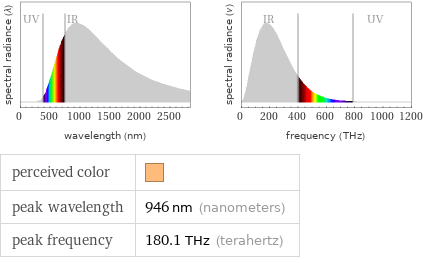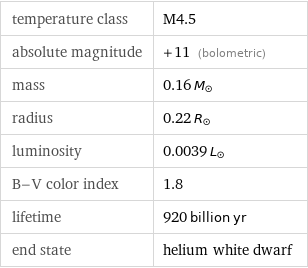Input interpretation

uranium carbide (1:1) | freezing point
Result

2790 °C (degrees Celsius)
Unit conversions

3063 K (kelvins)

5054 °F (degrees Fahrenheit)

5514 °R (degrees Rankine)

2232 °Ré (degrees Réaumur)

1472 °Rø (degrees Rømer)
Blackbody information

perceived color | peak wavelength | 946 nm (nanometers) peak frequency | 180.1 THz (terahertz)
Corresponding main-sequence star properties

temperature class | M4.5 absolute magnitude | +11 (bolometric) mass | 0.16 M_☉ radius | 0.22 R_☉ luminosity | 0.0039 L_☉ B-V color index | 1.8 lifetime | 920 billion yr end state | helium white dwarf
Examples of M4.5 main-sequence stars

Ross 128 | Gl 83.1 | GJ 1151
Corresponding quantities

Thermodynamic energy E from E = kT: | 26 ceV (centielectronvolts)

Blackbody energy flux Φ from Φ = σT^4: | 4.992×10^6 W/m^2 (watts per square meter)

Approximate luminous exitance from a planar blackbody radiator perpendicular to its surface: | 1.13×10^8 lx (lux)